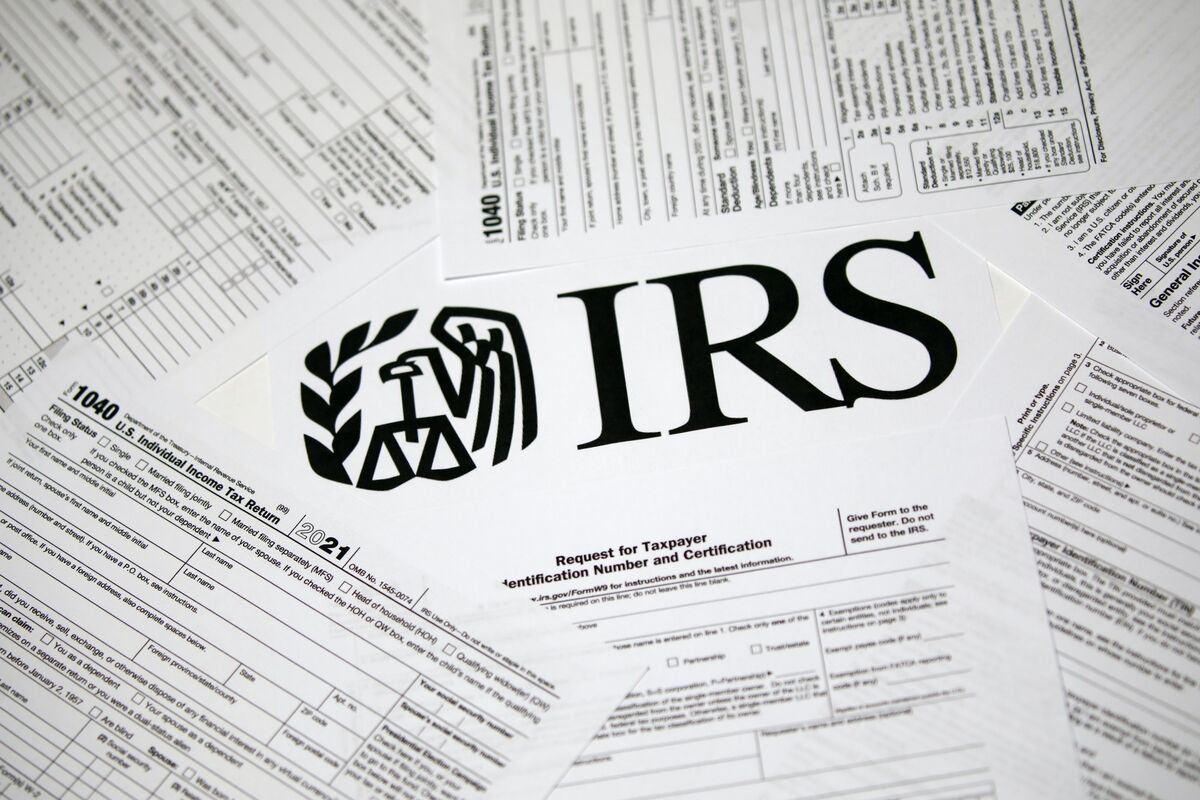Home>Finance>Where To Report The Sale Of Investment Property On A Tax Return


Finance
Where To Report The Sale Of Investment Property On A Tax Return
Published: October 29, 2023
Learn where to report the sale of your investment property on your tax return and get valuable finance tips to maximize your deductions.
(Many of the links in this article redirect to a specific reviewed product. Your purchase of these products through affiliate links helps to generate commission for LiveWell, at no extra cost. Learn more)
Table of Contents
- Introduction
- Understanding Investment Property Sales
- Types of Investment Property
- Determining Your Gain or Loss
- Reporting the Sale on Schedule D
- Important Tax Forms and Documentation
- Reporting the Sale on State Tax Returns
- Deducting Expenses and Depreciation
- Tax Strategies for Investment Property Sales
- Reporting a Like-Kind Exchange
- Reporting Installment Sales
- Foreign Investment Property Sales
- Conclusion
Introduction
Investment properties can be a lucrative venture, providing both rental income and the potential for appreciation. However, when it comes time to sell your investment property, it’s important to understand the tax implications and reporting requirements. Failing to report the sale correctly could result in penalties or the loss of potential deductions. In this article, we will explore where to report the sale of investment property on a tax return and provide essential information to ensure compliance with tax laws.
Investment property sales can have significant tax implications, as they involve the recognition of gain or loss on the property’s sale. The Internal Revenue Service (IRS) categorizes investment properties as capital assets, which means that any profit from the sale is typically subject to capital gains tax. Understanding the tax rules surrounding investment property sales is crucial for accurately reporting the transaction on your tax return.
There are various types of investment properties, including residential rental properties, commercial buildings, vacant land, and even vacation homes. Each type of property may have specific tax rules and reporting requirements. It’s essential to identify the type of investment property you are selling to ensure accurate reporting.
Determining the gain or loss on the sale of an investment property involves calculating the difference between the property’s adjusted basis and the sales price. The adjusted basis considers factors such as the original purchase price, closing costs, improvements, and depreciation taken over the years. Understanding how to determine your gain or loss is crucial for accurate reporting on your tax return.
The reporting of investment property sales is typically done on Schedule D of your individual tax return (Form 1040). Schedule D is used to report capital gains and losses from various types of investments, including the sale of investment properties. It’s important to accurately complete this form and attach it to your tax return to report the sale and calculate your tax liability.
In addition to Schedule D, there may be other tax forms and documentation required for reporting the sale of investment property, depending on your situation. Some examples include Form 4797 for reporting the sale of business or rental property, Form 8824 for reporting like-kind exchanges, and Form 6252 for reporting installment sales. Familiarizing yourself with these forms and the associated instructions will help ensure accurate reporting.
Understanding Investment Property Sales
Investment property sales involve the transfer of ownership of a property that was primarily held for investment purposes. These sales can result in either a capital gain or a capital loss, depending on the difference between the property’s selling price and its adjusted basis.
When determining the gain or loss on the sale of an investment property, it’s important to consider the adjusted basis. The adjusted basis takes into account various factors such as the original purchase price, closing costs, and any improvements made to the property. Additionally, if you have taken depreciation deductions on the property in previous years, the adjusted basis should be adjusted to reflect the depreciation taken.
If the selling price of the investment property is higher than its adjusted basis, you will have a capital gain. On the other hand, if the selling price is lower than the adjusted basis, you will have a capital loss. It’s important to note that capital gains are typically subject to tax, while capital losses may be used to offset capital gains.
It’s essential to accurately calculate and report the gain or loss on the sale of an investment property. Failing to do so could result in inaccurate tax filings and potential penalties from the IRS. To ensure accurate reporting, it’s recommended to consult with a tax professional or utilize tax software that can guide you through the process.
Keep in mind that different rules may apply depending on the type of investment property being sold. For example, if you are selling a residential rental property, you may be eligible for certain deductions and depreciation recapture. On the other hand, if you are selling a commercial property, different rules may apply. Understanding the specific tax rules associated with your type of investment property is crucial for accurate reporting.
When reporting the sale of an investment property, you will generally use Schedule D of your individual tax return (Form 1040). This form is used to report capital gains and losses from various types of investments, including the sale of investment properties. Schedule D provides sections to report the details of each investment property sale, including the sales price, the adjusted basis, and the resulting gain or loss.
In addition to Schedule D, there may be other tax forms and documentation required, depending on the specific circumstances of the sale. For example, if you engaged in a like-kind exchange, you may need to report it on Form 8824. If you sold the property in installments, Form 6252 may be required. Consulting with a tax professional can help ensure that you understand and comply with all the necessary reporting requirements.
Types of Investment Property
Investment properties come in various forms, each with its own unique characteristics and tax considerations. Understanding the different types of investment property can help you navigate the tax landscape when it comes time to sell. Here are some common types of investment properties:
- Residential Rental Properties: Residential rental properties are perhaps the most common type of investment property. These include single-family homes, condominiums, townhouses, and apartment buildings that are purchased with the intention of generating rental income. When selling a residential rental property, you should consider factors like rental income, depreciation, and any deductions or credits associated with the property.
- Commercial Properties: Commercial properties include office buildings, retail spaces, industrial warehouses, and hotels. These properties are typically used for business purposes and can generate substantial rental income. Tax considerations for commercial property sales may differ from residential properties, with specific rules and deductions that apply to the commercial real estate sector.
- Vacation Homes: Vacation homes or second homes can also be considered investment properties. If you rent out your vacation home for part of the year, it becomes a hybrid property with both personal and rental uses. The tax implications for the sale of a vacation home will depend on factors such as the number of days rented and the amount of personal use.
- Vacant Land: Investment in vacant land with the intention of future development or resale can also be classified as an investment property. When you sell vacant land, the gain or loss is calculated based on the difference between the selling price and the original purchase price. It’s important to keep detailed records of the acquisition cost, any improvements, and holding costs associated with the land.
- Real Estate Investment Trusts (REITs): For investors who want to diversify their real estate portfolios without directly owning properties, investing in Real Estate Investment Trusts (REITs) can be an attractive option. REITs pool investors’ money to purchase and manage income-generating properties. When it comes to selling REIT investments, the tax treatment may differ from direct property sales, so it’s important to consult the prospectus or a tax professional.
No matter the type of investment property you own, it’s crucial to understand the specific tax rules and reporting requirements associated with the sale. Each type of investment property may have its own set of deductions, credits, and depreciation rules, which can impact the gain or loss calculation. Consider consulting with a tax professional who specializes in real estate transactions to ensure accurate reporting and maximize tax benefits during the sale process.
Determining Your Gain or Loss
When selling an investment property, it’s important to accurately determine your gain or loss on the transaction. The gain or loss is calculated by taking into account the property’s adjusted basis and the selling price. Here’s a breakdown of the key factors involved in determining your gain or loss:
Adjusted Basis: The adjusted basis of an investment property is the original purchase price plus any additional costs associated with acquiring and improving the property. These costs may include closing costs, legal fees, and expenses related to renovations or enhancements. If you have claimed depreciation on the property in previous years, the adjusted basis should be adjusted to account for the depreciation taken.
Selling Price: The selling price of the investment property is the amount you receive from the buyer in exchange for transferring ownership. It can include cash, the assumption of debt, or other forms of consideration. It’s important to note that the selling price should be adjusted for any selling expenses incurred during the transaction, such as real estate commissions, legal fees, and closing costs.
Calculating Gain or Loss: To calculate the gain or loss on the sale of an investment property, subtract the adjusted basis from the selling price. If the selling price is higher than the adjusted basis, you will have a capital gain. Conversely, if the selling price is lower than the adjusted basis, you will have a capital loss.
Capital Gains Tax: If you have a capital gain on the sale of your investment property, it may be subject to capital gains tax. The tax rate for capital gains depends on your income level and the length of time you held the property. If you held the property for more than one year, it is considered a long-term capital gain, which is typically taxed at a lower rate than short-term capital gains (held for one year or less).
It’s important to keep meticulous records of the property’s purchase price, improvements, depreciation deductions, and other costs associated with the investment. Accurate documentation will help you calculate the adjusted basis and provide supporting evidence in the event of an audit or further scrutiny by the tax authorities.
Consulting with a tax professional or utilizing tax software can be beneficial in accurately determining your gain or loss on the sale of an investment property. These resources can guide you through the calculation process and help ensure compliance with tax laws.
Reporting the Sale on Schedule D
When it comes to reporting the sale of an investment property on your tax return, the most common form used is Schedule D (Capital Gains and Losses). Schedule D is a part of your individual tax return (Form 1040) and is used to report capital gains and losses from various types of investments, including the sale of investment properties.
Here are the key steps to report the sale of an investment property on Schedule D:
- Gather Information: Before starting, gather all the necessary information, including the property’s purchase price, selling price, adjusted basis, and any selling expenses incurred. These details will be used to accurately calculate the gain or loss on the sale.
- Complete Part I: Begin by entering your name and social security number at the top of Schedule D. Then, proceed to Part I, where you will report each investment property sold during the tax year. Provide a detailed description of the property, including its date of acquisition, date of sale, and the sales price.
- Calculate Gain or Loss: In Part II, calculate the gain or loss for each investment property sold. Subtract the adjusted basis from the sales price to determine the gain or loss amount. If you have multiple investment properties sold, repeat this calculation for each property.
- Net Gain or Loss: Total all the gains and losses from the investment properties sold and enter the respective totals on lines 7 and 15 of Part II. Calculate the net gain or net loss by subtracting the total losses from the total gains.
- Enter the Net Gain or Loss: Transfer the net gain or loss to line 16 of Schedule D, which will determine whether you have a net capital gain or net capital loss for the tax year. If you have a net capital gain, proceed to Form 1040 and enter the amount on the appropriate line. If you have a net capital loss, you may be able to use it to offset other capital gains or deduct a portion against your ordinary income (subject to certain limits).
- Attach Supporting Documents: Finally, it’s important to keep accurate records of the investment property sales and any supporting documentation. This includes documents such as closing statements, purchase contracts, and receipts for improvements. While you do not need to attach these documents to your tax return, it is advised to keep them in your records for at least three years in case of an audit.
It’s crucial to accurately complete Schedule D and report the sale of investment properties on your tax return. Failing to report the sale or inaccurately reporting the gain or loss could result in penalties or the loss of potential deductions. If you are unsure or have complex investment property sales, it’s recommended to seek the assistance of a tax professional to ensure compliance with tax laws and optimize your tax position.
Important Tax Forms and Documentation
When reporting the sale of an investment property on your tax return, there are several important tax forms and documentation that you may need to complete and include. These forms and documentation help ensure accurate reporting and compliance with tax laws. Here are the key ones to be aware of:
- Schedule D: Schedule D, also known as Capital Gains and Losses, is the primary form used to report the sale of investment properties. This form is part of your individual tax return (Form 1040) and is used to calculate and report capital gains or losses. It includes sections to report the details of each investment property sold, including the sales price, adjusted basis, and resulting gain or loss.
- Form 4797: Form 4797, Sales of Business Property, may be required if you are selling a rental property or other property used for business purposes. This form is used to report the sale of property used in a trade or business, such as rental real estate. It allows you to report gain or loss from the sale, as well as any depreciation recapture.
- Form 8824: Form 8824, Like-Kind Exchanges, is used to report a transaction where you exchange an investment property for another property of like-kind. Like-kind exchanges, also known as Section 1031 exchanges, allow you to defer capital gains tax on the sale of an investment property if you reinvest the proceeds into another qualifying property. This form is required to report the details of the exchange and calculate any taxable gain or loss.
- Form 6252: Form 6252, Installment Sale Income, is used to report the sale of an investment property where the buyer pays you in installments over a period of time. This form calculates the taxable gain to be recognized in each installment payment received, taking into account any principal payments, interest, and depreciation adjustments.
- Other Documentation: In addition to the tax forms mentioned above, it’s important to keep accurate records and supporting documentation related to the sale of your investment property. This includes documents such as the purchase contract, closing statement, receipts for improvements, and any depreciation schedules. While you do not need to attach these documents to your tax return, it is recommended to keep them in your records for at least three years in case of an audit.
Consulting with a tax professional or utilizing tax software can help ensure that you accurately complete the necessary tax forms and include all required documentation when reporting the sale of an investment property. These resources can guide you through the process, provide assistance in determining which forms to use, and help maximize your tax benefits while ensuring compliance with tax laws.
Reporting the Sale on State Tax Returns
When you sell an investment property, it’s essential to not only report the sale on your federal tax return but also on your state tax return. Each state has its own tax laws and reporting requirements, so it’s important to understand how to report the sale on state tax returns to ensure compliance. Here are some key considerations:
State Capital Gains Tax: Some states impose their own capital gains tax on the sale of investment properties. This means that in addition to reporting the sale on your federal tax return, you may also need to report it on your state tax return and pay any applicable state capital gains tax. It’s important to check your state’s tax laws to determine if capital gains from investment property sales are subject to state taxes.
State-Specific Forms: Each state has its own tax forms and instructions for reporting investment property sales. These forms may be different from the federal tax forms you use. It’s important to familiarize yourself with your state’s specific forms and instructions to accurately report the sale on your state tax return.
Income Allocation: Depending on your state’s tax laws, you may need to allocate the gain or loss from the sale of an investment property between different states if you own property in multiple states. This is important for determining the portion of the gain or loss that should be reported on each state’s tax return. Some states use factors such as the location of the property or the ratio of income earned in each state to determine the allocation.
State-Specific Deductions and Credits: Just like federal tax returns, state tax returns may have their own set of deductions and credits that can help minimize your tax liability. It’s important to review your state’s tax laws and forms to identify any state-specific deductions or credits that can be applied to the sale of an investment property.
Consult with a Tax Professional: Given the complexities of state tax laws and reporting requirements, it’s recommended to consult with a tax professional who is familiar with your specific state’s tax laws. They can provide guidance on reporting the sale of your investment property accurately and maximizing any state-specific deductions or credits.
Be sure to carefully review your state’s tax laws and consult with a tax professional to ensure that you report the sale of your investment property correctly on your state tax return. By doing so, you can meet your state’s reporting requirements and potentially minimize your state tax liability.
Deducting Expenses and Depreciation
When it comes to reporting the sale of an investment property on your tax return, it’s important to consider any eligible deductions that can help reduce your taxable gain. Deductible expenses and depreciation can play a significant role in lowering your tax liability. Here are some key points to keep in mind:
Operating Expenses: Throughout the period of ownership, you may have incurred various operating expenses related to the investment property. These expenses can include property management fees, repairs and maintenance, insurance premiums, property taxes, and utilities. It’s important to retain records of these expenses, as they may be deductible against the rental income generated by the property. Deducting these expenses can help lower your taxable income from the investment property and potentially reduce your overall tax liability.
Capital Improvements: If you made significant improvements to the investment property that enhance its value, such as renovating the kitchen or adding an extension, these expenses may be considered capital improvements. Unlike operating expenses, which are generally deductible in the year they are incurred, capital improvements are typically depreciated over the useful life of the property. Depreciation allows you to deduct a portion of the improvement costs each year over a set period of time, typically 27.5 years for residential rental properties and 39 years for commercial properties. The depreciation deduction can help offset rental income and lower your taxable gain when you sell the property.
Section 179 Expense: Under Section 179 of the Internal Revenue Code, you may be able to deduct the cost of certain qualifying property, including improvements, in the year they were placed in service. This provision allows you to accelerate the depreciation deduction and potentially offset a larger portion of your rental income. However, there are limits to the amount of Section 179 expense you can claim each year, so it’s important to consult with a tax professional to determine your eligibility and the maximum allowable deduction.
Depreciation Recapture: When you sell an investment property, any depreciation claimed in previous years will be subject to depreciation recapture. Depreciation recapture is a tax provision that requires you to include a portion of the accumulated depreciation as ordinary income in the year of sale. The recaptured depreciation is typically taxed at a higher rate than capital gains, so it’s important to account for this potential tax liability when calculating your taxable gain.
Consult with a Tax Professional: Deducting expenses and depreciation in relation to the sale of an investment property can be complex. It’s highly recommended to consult with a tax professional or utilize tax software to ensure that you accurately deduct eligible expenses and calculate depreciation. A tax professional can help you navigate the various deductions available, stay compliant with tax laws, and maximize your tax benefits.
By taking advantage of eligible deductions for operating expenses and depreciation, you can potentially reduce your taxable gain from the sale of the investment property and lower your tax liability. It’s important to keep detailed records of expenses, improvements, and depreciation schedules to support your deductions and ensure accurate reporting on your tax return.
Tax Strategies for Investment Property Sales
When it comes to selling an investment property, there are several tax strategies you can employ to help minimize your tax liability and maximize your after-tax profits. These strategies involve taking advantage of various tax rules and provisions. Here are some tax-saving strategies to consider:
Timing of the Sale: The timing of your investment property sale can have a significant impact on your tax liability. If you have a capital gain from the sale, consider postponing the transaction until the next tax year if you anticipate being in a lower tax bracket. By delaying the sale, you can potentially reduce the amount of tax owed on the gain.
Utilize the Primary Residence Exclusion: If the investment property was once your primary residence, you may be eligible to use the primary residence exclusion. This exclusion allows homeowners to exclude a certain amount of capital gains from the sale of their primary residence from their taxable income. If you meet the ownership and residency requirements, you can exclude up to $250,000 of capital gains if you are single, or up to $500,000 if you are married filing jointly. This strategy is particularly beneficial if the investment property has experienced significant appreciation.
Consider a Like-Kind Exchange: Another tax strategy to consider is a like-kind exchange, also known as a tax-deferred exchange or a Section 1031 exchange. This provision allows you to defer capital gains taxes on the sale of an investment property if you use the proceeds to acquire another property that is considered “like-kind.” By reinvesting the proceeds into a qualifying replacement property, you can defer tax payments and potentially grow your real estate portfolio without incurring an immediate tax liability.
Sell in Installments: If the buyer is willing to purchase the property in installments, you can potentially defer tax payments by using the installment sale method. This allows you to spread the recognition of the gain over several years as you receive payments. By deferring the recognition of the gain, you can potentially minimize your tax liability in the year of sale and spread the tax burden over a longer period of time.
Take Advantage of Deductions and Credits: Ensure that you are taking full advantage of any deductions and credits available to you. Deductible expenses, such as operating costs and depreciation, can help reduce your taxable income. Additionally, there may be specific tax credits available for certain types of investment properties or investments in renewable energy, which can further reduce your tax liability.
Consult with a Tax Professional: The tax strategies mentioned above can be complex, and their applicability may depend on your specific circumstances. It’s highly recommended to consult with a tax professional who specializes in real estate transactions or investment properties. They can provide personalized advice, help you navigate the tax landscape, and ensure that you are taking advantage of all available tax-saving opportunities.
By employing these tax strategies and working with a tax professional, you can potentially minimize your tax liability and maximize your financial gains from the sale of an investment property. It is essential to understand and carefully plan your tax approach based on your specific situation and prevailing tax laws.
Reporting a Like-Kind Exchange
A like-kind exchange, also known as a tax-deferred exchange or a Section 1031 exchange, allows you to defer capital gains taxes on the sale of an investment property if you use the proceeds to acquire another property that is considered “like-kind”. Reporting a like-kind exchange on your tax return requires careful compliance with specific IRS rules and reporting requirements. Here’s what you need to know:
Identify the Properties: To initiate a like-kind exchange, you must identify the replacement property within 45 days of selling your investment property. You can identify up to three potential replacement properties or any number of properties as long as their total fair market value does not exceed 200% of the sold property’s value. Properly document the identification and keep a record of it.
Complete Form 8824: Form 8824, Like-Kind Exchanges, is the tax form used to report the exchange to the IRS. On this form, you will provide details of the original property sold, the replacement property acquired, and the intermediary, if applicable. The form calculates the realized gain on the sale and the gain deferred due to the like-kind exchange. It also determines any taxable boot received or paid during the exchange.
Report on Tax Return: Report the like-kind exchange on your tax return for the year in which the exchange took place. You will need to provide the required information from Form 8824 on your tax return, typically on Schedule D (Capital Gains and Losses) and Form 4797 (Sales of Business Property) if applicable. Make sure to include the deferred gain as a note or letter attached to your tax return to inform the IRS of the exchange.
Hold the Replacement Property: Once the like-kind exchange is completed, you must hold the replacement property for investment or business purposes. The IRS requires that you hold the property for a specific period, usually two years, to fully defer the capital gains tax. Selling the property soon after acquiring it may trigger the recognition of the deferred gain.
Consult with a Qualified Intermediary: A qualified intermediary is a third-party facilitator who helps facilitate the like-kind exchange process. They hold the proceeds from the sale of the relinquished property and use it to acquire the replacement property. Utilizing a qualified intermediary is not mandatory, but their expertise can help ensure compliance with IRS rules and deadlines for the exchange.
Seek Professional Assistance: Due to the complexities of reporting a like-kind exchange, it is highly recommended to seek professional assistance from a tax advisor or a qualified intermediary. They can guide you through the process, ensure proper documentation, help complete Form 8824 accurately, and ensure compliance with all IRS requirements.
Properly reporting a like-kind exchange is crucial for deferring capital gains tax and complying with IRS rules. By following the necessary steps, timely identifying replacement properties, and accurately completing the required tax forms, you can take advantage of the tax benefits offered by like-kind exchanges and maximize your investment opportunities.
Reporting Installment Sales
If you choose to sell your investment property through an installment sale, where the buyer pays you in installments over time, you need to be aware of the specific reporting requirements for this type of transaction. Reporting installment sales correctly on your tax return is important to ensure compliance with IRS rules. Here’s what you need to know:
Recognizing Gain: In an installment sale, you only recognize a portion of the gain from the sale each year as you receive payments. The installment method allows you to spread the recognition of the gain over the term of the installment contract. This can help you defer the payment of taxes on the gain and potentially reduce your overall tax liability.
Completing Form 6252: Form 6252, Installment Sale Income, is used to report installment sales to the IRS. The form calculates the taxable gain to be recognized in each installment payment received, taking into account the principal, interest, and potential depreciation recapture. Provide details of the installment sale, including the property sold and the terms of the sale. Report the applicable gain or loss on each payment received during the tax year.
Capital Gains Tax: While the installment method allows you to defer the recognition of gain, it’s important to note that you will still be subject to capital gains tax on the portion of the gain recognized each year. The tax rate for the recognized gain depends on factors such as your income level and the length of time you held the property. The remaining gain not recognized is treated as an installment sale receivable and is subject to interest income as you receive the payments.
Interest Income and Reporting: As you receive installment payments, you will also be earning interest income on the outstanding balance. The interest income should be reported as ordinary income on your tax return in the year it is received. The interest portion of each installment payment should be reported separately from the gain recognized in that payment.
Additional Forms: Depending on your specific situation, you may need to complete additional forms when reporting installment sales. For example, if you are selling depreciable property, you may also need to complete Form 4797 to calculate the depreciation recapture. Consulting with a tax professional can help ensure that you are using the appropriate forms and reporting correctly based on your circumstances.
Notekeeping: It’s crucial to maintain accurate records and documentation of the installment sale, including the terms of the agreement, payments received, and any interest income. Proper documentation will support your reporting on Form 6252 and any potential adjustments or deductions you may need to make in future tax years.
Consult with a Tax Professional: Due to the complexities involved in reporting installment sales, it’s advisable to consult with a tax professional or utilize tax software to ensure accurate reporting. They can guide you through the process, help you complete the necessary forms, and ensure compliance with IRS rules and regulations.
By understanding the reporting requirements for installment sales and accurately reporting each installment payment and associated gain, you can effectively manage your tax liability while selling your investment property in installments.
Foreign Investment Property Sales
If you are a U.S. taxpayer who owns and sells foreign investment property, there are specific considerations and reporting requirements that you need to be aware of. Selling foreign investment property can have implications both in the United States and in the country where the property is located. Here’s what you need to know:
Foreign Capital Gains Tax: When selling a foreign investment property, you may be subject to capital gains tax in the country where the property is located. The tax rate and rules can vary depending on the jurisdiction. It’s important to research and understand the tax laws of the foreign country to determine your tax obligations there.
Foreign Tax Credits: To avoid double taxation, the United States allows taxpayers to claim a foreign tax credit for any taxes paid to a foreign country on the sale of their investment property. This credit helps offset your U.S. tax liability for the gain from the foreign property sale. You can claim the foreign tax credit by completing Form 1116, Foreign Tax Credit, or by taking the credit directly on your Schedule A if you qualify.
Foreign Reporting Requirements: In addition to reporting the sale on your U.S. tax return, you may also have reporting obligations to the foreign tax authority. Some countries require non-resident taxpayers to report and pay tax on the sale of their investment property. Failure to comply with foreign reporting requirements can result in penalties and additional tax liability.
Foreign Currency Exchange: The sale of a foreign investment property may involve currency exchange transactions. Fluctuating exchange rates can impact the taxable gain or loss on the sale. Consider consulting with a tax professional to understand the tax implications of currency exchange and how to accurately report the transaction in your home country.
Consider Double Taxation Agreements: The United States has entered into double taxation agreements with many countries to mitigate the impact of double taxation. These agreements aim to prevent taxpayers from paying tax on the same income or gain in both countries. Review the relevant tax treaty between the United States and the country where your investment property is located to understand how it affects the taxation of your property sale.
Consult with a Tax Professional: Due to the complexities of foreign investment property sales and the potential tax implications in both the United States and the foreign country, it is highly recommended to consult with a tax professional who is knowledgeable about international tax laws. They can guide you through the reporting requirements, help you claim foreign tax credits, and ensure compliance with tax laws in both jurisdictions.
Properly reporting and managing the tax implications of the sale of a foreign investment property is crucial for minimizing your overall tax liability and avoiding any potential penalties or compliance issues. Adhering to the reporting requirements and seeking professional guidance will help ensure compliance with both U.S. and foreign tax laws.
Conclusion
Reporting the sale of an investment property on your tax return involves careful consideration of the specific tax rules and reporting requirements. By understanding where and how to report the sale, you can accurately calculate your gain or loss, maximize any eligible deductions, and ensure compliance with tax laws. Taking the time to understand the nuances of tax reporting for investment property sales can potentially reduce your tax liability and optimize your financial outcomes.
Throughout this article, we have explored various aspects of reporting investment property sales, including understanding the different types of investment properties, determining gain or loss, reporting on Schedule D and other tax forms, deducting expenses and depreciation, and exploring tax strategies for minimizing tax liability. We have also touched on reporting requirements for like-kind exchanges, installment sales, foreign investment property sales, and the importance of consulting with tax professionals to navigate these complexities.
While the information provided here offers insight into reporting investment property sales, it’s important to consult with a tax professional to ensure compliance with the ever-changing tax laws and regulations. Every taxpayer’s situation is unique, and tax rules can vary based on jurisdiction and individual circumstances.
By taking a proactive approach to tax reporting for investment property sales, you can ensure accurate reporting, minimize your tax liability, and stay in good standing with tax authorities. Keeping meticulous records, staying updated on tax regulations, and seeking professional advice when needed are key steps for successfully navigating the tax implications of investment property sales.
Remember, the information provided in this article is for general informational purposes only and should not be considered as specific tax advice. It’s always recommended to consult with a qualified tax professional regarding your individual tax situation and any specific questions or concerns you may have.














